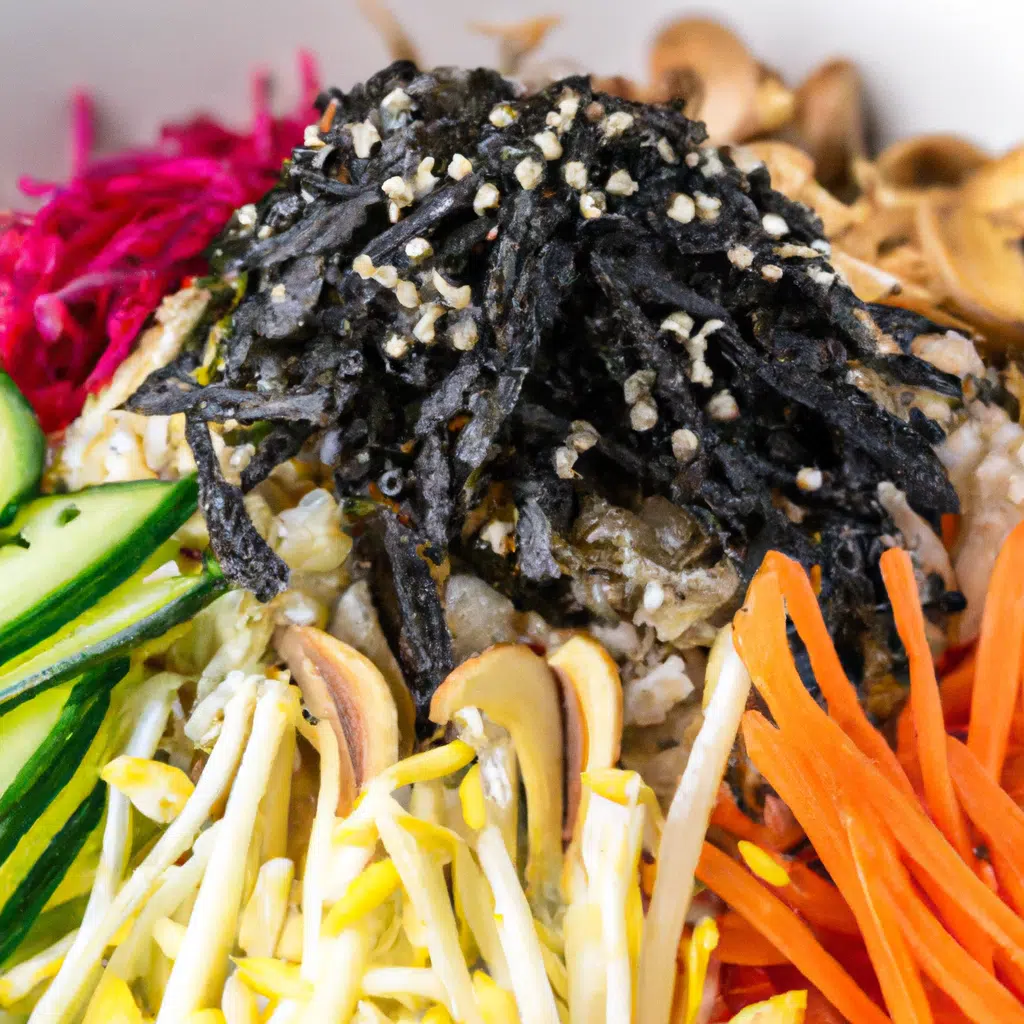
Are you a fan of Korean cuisine? Looking for a vegan twist to traditional dishes? Look no further! In this article, we will unveil the best vegan bibimbap recipe that will tantalize your taste buds and leave you craving for more. With its vibrant colors and irresistible flavors, this dish is a true delight for both vegans and non-vegans alike. So, let’s dive right in and discover the secrets to creating a mouthwatering vegan bibimbap!
The Origin and Significance of Bibimbap
Before we get into the recipe, let’s take a moment to appreciate the history and significance of bibimbap. Bibimbap, which means “mixed rice” in Korean, is a traditional dish that dates back centuries. It is believed to have originated from the royal court cuisine of the Joseon Dynasty in Korea.
Bibimbap is traditionally served in a hot stone bowl called “dolsot” and consists of a bed of steamed rice topped with an assortment of seasoned vegetables, protein (in our case, vegan protein alternatives), and a flavorful sauce. The dish is then mixed thoroughly before being enjoyed.
Choosing the Perfect Ingredients
To create the best vegan bibimbap, it’s essential to choose fresh and vibrant ingredients. Here’s a list of key ingredients you’ll need for this recipe:
- Steamed Rice: Use short-grain rice for that authentic Korean taste and texture.
- Assorted Vegetables: Opt for a colorful variety of vegetables such as carrots, spinach, mushrooms, zucchini, and bean sprouts. Ensure they are fresh and crisp.
- Vegan Protein Alternatives: Instead of traditional animal-based proteins, you can use tofu, tempeh, or seitan as delicious vegan alternatives. Make sure they are well-marinated and flavorful.
- Sesame Oil: This aromatic oil adds a rich nutty flavor to the dish. Look for toasted sesame oil for an extra depth of taste.
- Gochujang Sauce: Gochujang is a Korean fermented chili paste that gives bibimbap its signature spicy kick. Look for vegan-friendly gochujang without any animal-derived ingredients.
- Soy Sauce: Use low-sodium soy sauce or tamari for a savory umami flavor.
- Toasted Sesame Seeds: These crunchy seeds add a delightful texture and nutty taste to the dish.
The Step-by-Step Recipe
Now that we have our ingredients ready, let’s dive into the step-by-step process of creating the best vegan bibimbap:
Step 1: Prepare the Rice
Cook the short-grain rice according to the package instructions. Once cooked, set it aside to cool slightly while you prepare the other components of the dish.
Step 2: Marinate the Vegan Protein
Marinate your chosen vegan protein alternative in a mixture of soy sauce, minced garlic, and a touch of sesame oil. Allow it to marinate for at least 15-20 minutes to absorb the flavors.
Step 3: Prepare the Vegetables
Wash and peel the vegetables as needed. Cut them into thin, uniform slices or julienne them for a visually appealing presentation. Blanch the bean sprouts and spinach in boiling water for a few seconds, then transfer them to an ice bath to retain their vibrant green color. Sauté the mushrooms, carrots, and zucchini in a bit of sesame oil until they are tender and slightly caramelized.
Step 4: Create the Gochujang Sauce
In a small bowl, mix together gochujang, minced garlic, sesame oil, and a touch of sugar for a balanced and flavorful sauce. Adjust the spice level according to your preference.
Step 5: Assemble and Mix
Place a generous portion of steamed rice in the center of your serving bowls. Arrange the marinated vegan protein and assorted vegetables on top of the rice, creating a vibrant and visually appealing display. Drizzle the gochujang sauce over the vegetables. Sprinkle toasted sesame seeds for an added crunch.
Once everything is assembled, it’s time to mix! Take your chopsticks or a spoon and thoroughly mix all the ingredients together until the flavors are well-distributed.
Step 6: Enjoy the Culinary Delight
Now that your vegan bibimbap is ready, it’s time to enjoy this colorful and flavorful culinary delight! Take a moment to appreciate the vibrant colors and aromatic aromas before taking your first bite. Each mouthful will be a harmonious blend of textures and flavors, leaving you craving for more.
Conclusion
Congratulations! You’ve now unlocked the secrets to creating the best vegan bibimbap. With its vibrant colors, aromatic flavors, and wholesome ingredients, this dish is sure to impress both vegans and non-vegans alike. Whether you’re a fan of Korean cuisine or simply looking to explore new vegan recipes, this vegan bibimbap will undoubtedly become a favorite in your culinary repertoire. So, gather your ingredients, follow the steps, and embark on a flavorful journey to create your very own vegan bibimbap masterpiece!
